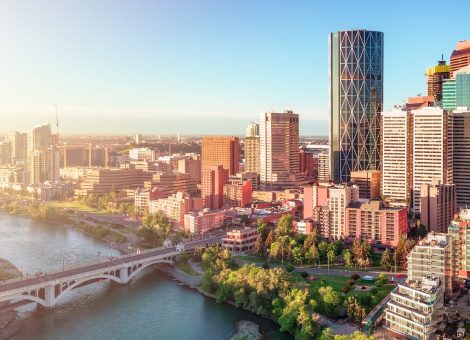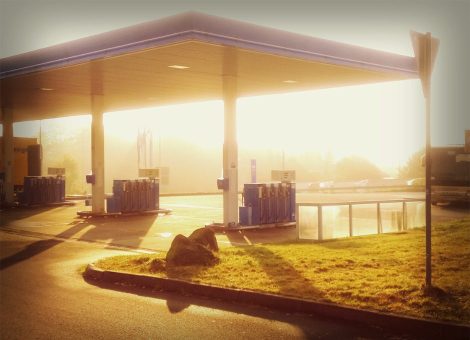Why location isn’t everything — selecting gas stations with high potential
The location of your gas station will hugely affect your site’s potential — but it’s not the only element that can influence your success. Kalibrate has identified the 7 Elements for Fuel and Convenience Retail success, and here —we discuss each element in turn and find out why it takes more than just a great location to be successful.
Assess your market
Who are your competitors? A busy location is great, but not if there are competitor stations on every corner. If you’re in close proximity to multiple competitors you need to understand what they offer, how they price, and how they operate. A full understanding of your competitors will help you to select products and services that differentiate you from the others. It’s not all about price, you don’t have to be the cheapest, but you need to offer something that your local customers want, that your competitors don’t offer.
Who are your customers? A fuel station is, of course, serving the needs of vehicle drivers, but you’ll need to understand more about who you’ll serve in order to offer the products and services they really want.
Demographic data can help you to determine who lives in the local area and what you might be able to offer that would entice them to visit your store. Combined with the competitive market information you’ve gathered; you’ll be able to find a service or product that your local market want that isn’t already fulfilled by the competition.
The impact of brand
A brand is more than just a company name and a set of colors — it’s an identity. A well-known brand carries with it a set of instantly recognizable elements. By just looking at a sign above a shop, a passer by understands what products the shop sells, the price point they sell them at, and the level of service they expect to receive.
Gas station owners can choose to fly the flag of a major brand and immediately harness the public perception that comes with it. What’s more, flying a brand allows you to take advantage of their big budget marketing and promotion. Certain brands resonate with different demographic segments. Understanding your market and competitors is key to selecting the right brand.
Forecourt facilities
The service you offer can be adapted easily, but your facilities are more fixed. Adding and changing facilities can be costly, so it’s important to get it right from the outset.
To successfully plan your facilities, you need to fully understand the ideal customer journey. For example, if your site has a convenience store, where will your customers park? Having spaces too far away from the store will discourage customers who want to stop by quickly to pick up essential items. Complicated store layouts may stop them finding what they need and put them off returning.
If you have a QSR, will you offer drive thru? The drive thru lane will need to be easy to enter and exit, visible from the forecourt and the street, and not restrict access to the rest of the facilities. A badly planned drive thru lane can block access to parking spaces and exits and will put customers off pulling into your forecourt.
Safety is an important factor that massively affects customer perception, but is sometimes overlooked when planning facilities. Good lighting can make the difference between a dark forecourt that looks dingy and unappealing, and a light, bright forecourt that looks inviting, no matter the hour. Good lighting will not only attract passing traffic, but will make sure that your customers feel safe at your site.
The science of merchandising
Merchandising isn’t just about flashy promotions — although that can play apart — it’s about offering the right products and services, at the right time, at the right price, and with the right attitude. This is the art and science of merchandising.
Good merchandising can make a customer feel like they need something before they even knew they wanted it.
Think about the mix of products and services you’ll sell. Make sure you offer a combination of low and high margin items and then display and promote them in a way that entices customers to purchase both. Gas stations with convenience stores have been known to sell gas as a loss leader. They sell gas at cost or below cost price to entice people into their stores for the higher margin items like candy, snacks, and tobacco. This strategy can work with different products if you get the mix right.
The price is right — but what if it’s wrong?
Price is, of course, a very influential factor in deciding where to buy fuel, but many gas station owners focus so much on price they forget the other elements of success. Price is important, but some customers will pay more for a better overall experience.
The competition matters. When deciding on your pricing strategy you need to understand how your competitors price, and how your price strategy compares. You’ll need to offer competitive fuel prices so that your customers feel that they’re getting value, but you don’t necessarily need to be the cheapest. Setting a price too high will discourage people from turning in, and they’ll never get to see the other products and services you have to offer. But set your price too low and you risk losing margin and not generating enough revenue at your site.
Operations
Think about the way you’ll operate, how that might impact your customer experience, and how it compares to your competition.
Technology can be utilized to make the customer experience smoother. Pay-at-the-pump facilities, self-checkouts, and digital payment methods can be implemented to make your gas station more convenient than your competitors. Once you’ve got everything else in place, the final hurdle for your gas station is planning the way you’ll operate.
As you work out the best way to do things, you should document your processes. This will help you to create consistency, and eventually allow for someone else to take over certain areas.
Ready to analyze the 7 Elements at your site? Get your fuel site analysis here
Read more articles about:
Location intelligenceSubscribe and get the latest updates
You may unsubscribe from our mailing list at any time. To understand how and why we process your data, please see our Privacy & Cookies Policy
Related posts
Fuel pricing
June 2025. Kalibrate's Canadian Petroleum Price Snapshot
Kalibrate conducts a daily survey of retail gasoline, diesel, propane, and furnace fuel prices in 77 Canadian cities....

Fuel pricing
The Kalibrate news round-up: June 2025
In this monthly feature, we look across the industry and mainstream news to uncover stories of note that we think are...

